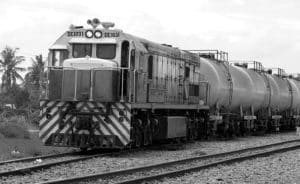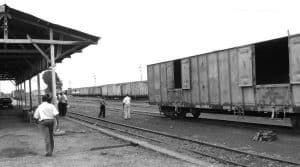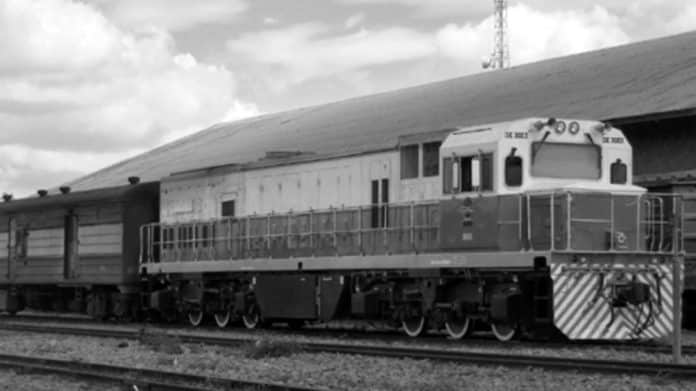Introduction to Mtwara’s Forgotten Rails
Once a bustling hub of industrial activity, Mtwara’s railway system has fallen into a state of disrepair, becoming a forgotten relic of Tanzania’s past. This article will take you on a journey through the rich history, decline, and potential revival of Mtwara’s railway industry, offering a glimpse into the region’s industrial heritage and the challenges it faces in preserving this important part of its legacy.
Historical Background of Mtwara’s Railway System

Mtwara’s railway system was established in the early 20th century, during the colonial era, as a means of transporting goods and resources from the region’s agricultural and industrial centers to the port city of Mtwara. The railway played a crucial role in the economic development of the area, facilitating the export of cash crops, such as cashews and sisal, as well as the import of essential supplies and materials.
The railway network in Mtwara consisted of several lines that connected the region’s key towns and industrial hubs, including Masasi, Newala, and Nachingwea. At its peak, the railway system was a vital component of Mtwara’s thriving economy, supporting the growth of local industries and communities.
Reasons for the Decline of Mtwara’s Railway Industry
Despite its initial success, Mtwara’s railway industry began to decline in the latter half of the 20th century due to a combination of factors:
- Neglect and Underinvestment: As Tanzania gained independence, the new government shifted its focus and resources to other regions, leading to a lack of investment and maintenance in Mtwara’s railway infrastructure.
- Competition from Road Transport: The rise of road transportation, particularly the expansion of the road network and the increasing availability of trucks, made it more cost-effective and efficient to transport goods by road, leading to a decline in the use of the railway system.
- Economic Challenges: The economic challenges faced by Tanzania, including periods of economic stagnation and structural adjustment programs, further exacerbated the decline of Mtwara’s railway industry, as resources were diverted away from the maintenance and modernization of the system.
The Impact of Mtwara’s Defunct Railway on the Local Economy
The decline of Mtwara’s railway industry has had a significant impact on the local economy. The loss of this vital transportation network has led to a decline in the region’s industrial output, as businesses struggle to transport their goods to markets and ports. This, in turn, has resulted in job losses, reduced tax revenue, and a general economic downturn in the region.
Furthermore, the absence of a reliable and efficient transportation system has made it more difficult for Mtwara to attract new investment and industries, hindering the region’s economic development and diversification.
Efforts to Revive Mtwara’s Railway System
In recent years, there have been some efforts to revive Mtwara’s railway system, with the Tanzanian government and various stakeholders exploring ways to rehabilitate and modernize the existing infrastructure. These efforts include:
- Infrastructure Assessments: Conducting comprehensive assessments of the existing railway infrastructure to identify the necessary repairs and upgrades required to restore the system to operational status.
- Feasibility Studies: Commissioning feasibility studies to determine the viability and potential benefits of reviving Mtwara’s railway industry, including the evaluation of potential investment opportunities and the identification of potential funding sources.
- Stakeholder Engagement: Engaging with local communities, businesses, and other stakeholders to gather input and build support for the revitalization of the railway system, ensuring that the needs and concerns of the local population are taken into account.
Challenges Faced in Revitalizing Mtwara’s Railway Industry

However, the task of reviving Mtwara’s railway industry is not without its challenges. Some of the key obstacles that need to be addressed include:
- Funding and Investment: Securing the necessary funding and investment to rehabilitate the existing infrastructure and modernize the railway system is a significant challenge, particularly in the face of limited resources and competing priorities.
- Technological Upgrades: Updating the outdated technology and equipment used in Mtwara’s railway system to meet modern standards and ensure the system’s long-term viability will require substantial investment and technical expertise.
- Regulatory and Policy Barriers: Navigating the complex regulatory and policy environment, including issues related to land rights, environmental regulations, and transportation policies, can be a significant hurdle in the revitalization process.
- Logistical Challenges: Coordinating the logistics of restoring and operating a railway system in a remote and often challenging geographical area, such as Mtwara, can be a daunting task.
The Cultural Significance of Mtwara’s Railway Heritage
Mtwara’s railway system is not just an important part of the region’s industrial history; it also holds significant cultural value for the local community. The railway stations, locomotives, and other artifacts serve as physical reminders of the region’s industrial past, connecting the community to its heritage and providing a sense of identity and pride.
Preserving and celebrating this cultural heritage can play a crucial role in fostering a deeper understanding and appreciation of Mtwara’s history, as well as in promoting tourism and generating economic opportunities for the local population.
Exploring Mtwara’s Abandoned Railway Stations and Routes
Despite the decline of Mtwara’s railway industry, many of the region’s abandoned railway stations and routes still stand as silent witnesses to the area’s industrial past. These forgotten relics offer a unique opportunity for visitors to explore and experience the remnants of Mtwara’s railway legacy.
From the crumbling platforms and rusting tracks to the overgrown locomotive depots and abandoned ticket offices, these sites provide a tangible connection to the region’s history, inviting visitors to imagine the bustling activity and economic vitality that once defined Mtwara’s railway industry.
Alternative Transportation Options in Mtwara
In the absence of a functional railway system, Mtwara has had to rely on alternative modes of transportation to meet the needs of its residents and businesses. These include:
- Road Transport: The expansion of the road network and the increased availability of trucks and buses have become the primary means of transporting goods and people within the region.
- Maritime Transport: The port city of Mtwara continues to play a crucial role in the region’s transportation landscape, with ships and ferries providing a vital link to other coastal regions and international markets.
- Air Travel: Mtwara’s airport, while limited in its capacity and connectivity, offers an alternative mode of transportation for those who can afford it, particularly for long-distance travel and the transport of high-value or time-sensitive goods.
However, these alternative transportation options, while necessary, have not been able to fully replace the efficiency and capacity of the once-thriving railway system, leading to ongoing challenges for the region’s economic development.
Conclusion: Preserving Mtwara’s Railway Legacy for Future Generations
Mtwara’s forgotten railway system represents a significant chapter in Tanzania’s industrial history, one that is in danger of being lost to time if not properly preserved and revitalized. The challenges facing the region’s efforts to restore its railway industry are substantial, but the potential rewards, both economic and cultural, are immense.
By investing in the rehabilitation and modernization of Mtwara’s railway infrastructure, the Tanzanian government and local stakeholders have the opportunity to breathe new life into the region’s industrial heritage, creating economic opportunities, strengthening community ties, and ensuring that this important part of Tanzania’s past is not forgotten.
As you have learned about the rich history and potential of Mtwara’s railway system, we encourage you to get involved in the efforts to revive this important part of Tanzania’s industrial legacy. Consider supporting local initiatives, visiting the region’s abandoned railway sites, or advocating for increased investment and attention to this forgotten, yet crucial, aspect of the country’s transportation network. Together, we can work to preserve Mtwara’s railway heritage for future generations.
For more articles related to Railway and train travel Tanzania, click here!

































